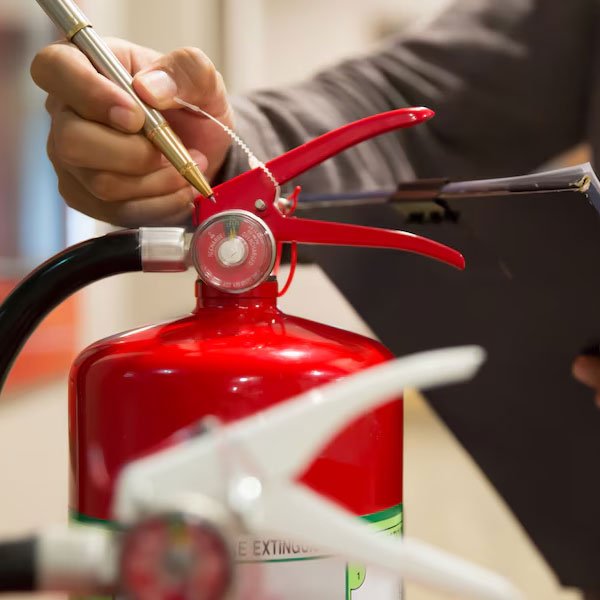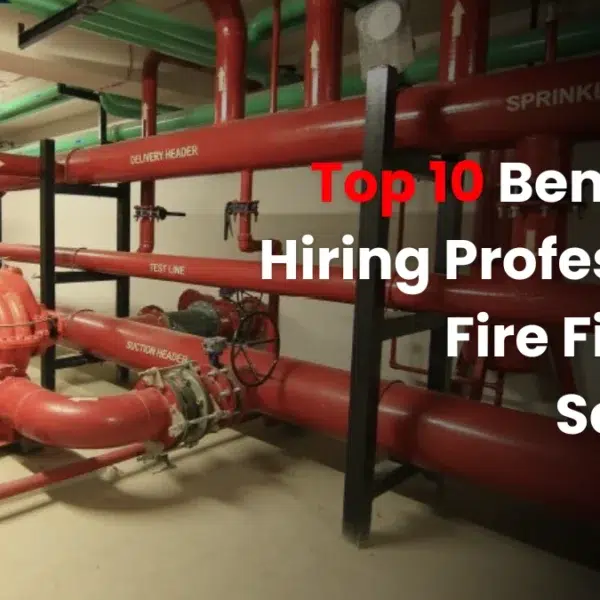10 Tips for Fire Safety in the Workplace


10 Tips for Fire Safety in the Workplace
Fire safety is essential for every workplace because this place has its own specific fire risks as fires can cause extreme damage, pose hazards to lives, and disrupt business operations. If you work in a factory or a farm, in a garage, or greengrocer, every workplace requires fire safety with its unique fire safety requirements.
To make the workplace a fire-hazard-free place, everyone should follow tips for fire safety in the workplace providing facility managers with strategies to prevent fires and protect the employees and premises
What are Fire Safety Tips?
To protect you and other people from fire incidents, fire safety tips are tiny bits of advice that may contribute to fire safety practices, which involve maintaining a safe and hazard-free place of work. To maintain fire safety, it’s essential to be aware of fire safety advice and other fire-preventive measures, whether you work as an office manager, a public worker, or a homeowner.
Why Do We Need to Use Fire Safety Tips?
Kitchen mishaps and electricity mishaps are the main cause of fires in homes as well as businesses in the world. By following to the right fire safety guidelines, you can avoid damage to property and keep everyone inside the building safe.
10 Tips For Fire safety in the workplace:
1. Install fire protection
The most effective method of protection from a fire smoke alarm. Install smoke detectors inside each sleeping room and on all floors of your establishment, including the basement. Install one inside your bedroom area as well if you stay with the door shut.
Each month, test your alarms and change the batteries at least once a year, or anytime the alarm “chirps” indicating that the battery is low. A disconnected smoke alarm cannot save your life, thus never “borrow” its battery. Every alarm that is older than ten years should be updated. Consider installing an automatic fire sprinkler system for complete establishment safety.
2. Have a fire escape plan and the right fire safety equipment
You must leave your establishment immediately in the case of a fire. Plan your family’s escape plan before it’s too late by sitting down and discussing it. Be sure that every person is aware of at least two clear exits from every area, including windows. (If you reside in an apartment building, the best way to escape a fire is via the stairs rather than the elevator.) Select an outdoor meeting area. Make sure that at least twice a year, everyone in your building learns your escape plan.
Make sure you have the right fire safety equipment in your workplace and confirm that it’s within comfortable reach in high-risk areas. It’s advised that you know what various fire extinguishers (water, foam, CO2, wet chemical, dry powder) are used for and how you utilize them. Convenient extinguishers and fire blankets should be throughout the establishment. You should include at least one fire extinguisher at home also.
Additionally, some commercial areas and multi-story buildings need to be installed: :
- Fire doors
- Fire sprinklers
- Fire hoses
- Emergency lighting
- Emergency signage
- Fire escape ladders
3. Know Your Fire Extinguishers
Fire extinguishers It’s essential to make sure that the workplace has the right type and quantity of Fire extinguishers for the size of the business and that everyone around is aware of how to utilize them appropriately in an emergency. Maintenance guidelines provided by the manufacturer should be followed.
4. Establish and maintain fire escape routes
They should be well-lit, devoid of obstructions, have clear signs, and bring passengers to a safe area.
People have to know the smallest and most efficient way to get to the gathering spot. Then, they won’t panic and can react fast in an emergency.
Regular inspections are essential to make sure that the last exit doors have been opened and that nothing might hinder the escape behind them.
Keep fire doors shut- They are there to stop the spread of fire and to safeguard escape routes. Make sure they do not become stuck open.
Emergency lighting: Every emergency route and exit needs to have sufficient lighting. Install illumination alongside firefighting equipment and sirens, at every door, hallway, floor level, and transition area. Make sure you regularly check your emergency lighting.
5. Promote Good Housekeeping
Maintain a clean workspace to prevent fires. Keep combustible items like paper and oily rags to a minimum.
Safely manage and safeguard chemicals. Take care to ventilate properly and read labels.
Prevent sparks when there are burning fumes present. Control static as well as make use of safe instruments.
Only smoke in allowed areas, and remove of waste appropriately.
Take away everything that may attract arsonists outside.
6. Maintain Emergency Contact Information
Maintaining emergency contact information is crucial. Keep a list of numbers for fire departments, ambulances, etc., and update it regularly. Make sure employees are aware of this information. Everyone needs to know what to do during a fire emergency, including how to respond to alarms and evacuate.
Your workplace should designate fire marshals responsible for creating and maintaining fire safety procedures. These individuals will coordinate with the employer to develop evacuation plans and lead evacuations during fires. They should also receive training on using firefighting equipment.
7. Fire safety signs
To be easily understood by everyone, all fire warnings must to have pictures. Make sure they are well-lit so that in an emergency—even in the case of a power outage—you can see them.
Returning the building is not recommended until it seems safe, even if it is just finding personal belongings.
8. Hold Regular Fire Drills
Make fire drills an annual or more regular part of your work everyday to make sure all staff members are aware of what to do in an emergency. If there are any significant alterations made to the evacuation routes, conduct a fire utilization sooner.
Can people move in a timely and efficient manner?– Get out yourself, evaluate what worked well and what didn’t, and make adjustments. Advise everyone of the advancements and continue to practice until you reach your maximum potential. It might be an excellent idea to establish a specific fire guide for supervising the correct execution of each fire drill.
9. Electrical Safety
here’s a simplified of your electrical safety guidelines:
- Turn off all electrical stuff when done for the day. This stops things from overheating and causing fires overnight.
- Don’t put too much stuff into one outlet or socket. It can make the fuse blow or start a fire.
- Keep things away from electrical control panels so we can get to them fast in an emergency.
- Tell someone if you see anything wrong with the electrical stuff. We need to fix it before it causes a fire.
- Keep the machines in good shape by checking them regularly. This stops them from getting too hot and causing sparks.
10. Keep Fire Safety Equipment Clear
Equipment for fire safety must always be maintained without hazards and visible. Ensure that nothing hinders the use of fire extinguishers, fire escapes, or Fire sprinkler systems fall under this category.
Sprinkler systems cannot be concealed by decorations or other objects, extinguishers for fires shouldn’t be hidden back behind desks, and fire exits should never be close to machinery. Additionally, never hinder smoke alarms or sprinkler systems. These equipment are essential for saving lives in the face of a fire, thus it’s essential to keep them unhindered by everything that can impede their ability to fulfill their responsibilities.
Conclusion
If you want to ensure that you meet all legal fire safety standards, including laws, Damia Global Services provides comprehensive help. Visit our website to find out more important information about safety signs, emergency lighting, fire doors, extinguishers, and fire alarm systems.
We provide fire safety training, risk assessments for fires, and advising help. Facility managers are vital for ready and prevention because they maintain equipment, perform routine evaluations, and plan activities. Keeping workplace safety needs constant attention to specifics and a rigorous evaluation of fire safety.
https://www.youtube.com/embed/cveuVXqrYq4https://www.youtube.com/embed/vouWAx-VWhghttps://www.youtube.com/embed/aMi7iXD0l9I



